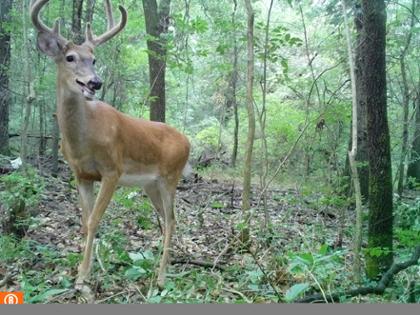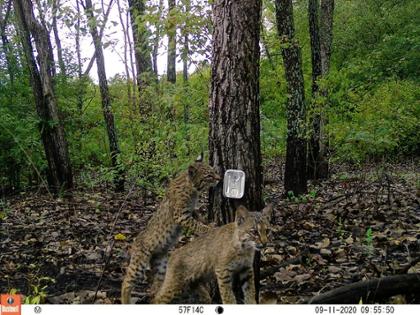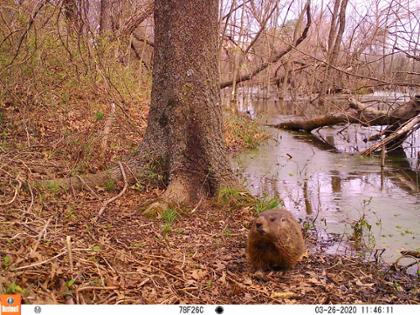Biology students, teacher once again chosen for Smithsonian project
Wednesday, September 30, 2020 1:30 PM
News, Academics, Science and Technology
Pittsburg, KS

For a second year, Pittsburg State University students are collecting data for a national project by the Smithsonian Institution that will paint a picture of the diversity of mammal life across the U.S.
Biology major Caleb Durbin, of Chanute, Kansas, is the lead undergraduate, collaborating with Assistant Professor Christine Brodsky, a certified wildlife biologist, on Snapshot USA. Together, they’re setting out and monitoring camera traps in nature areas throughout Pittsburg.
The project began in September and will continue through October.
“We’re trying to document which mammals exist here and the impact that humans have on them,” Durbin said. “Researchers are doing this in all 50 states, and we were chosen for Kansas.”
It’s the first such survey conducted by wildlife professionals rather than citizen scientists, and ultimately will inform national conservation and management strategies.
The Smithsonian first chose PSU to represent Kansas last year during the inaugural survey, based upon urban ecology research Durbin published on Digital Commons. In two months, the PSU team captured more than 8,000 images of 16 mammal species: deer, raccoon, gray and fox squirrel, opossum, eastern cottontail rabbit, mouse species, rat species, armadillo, coyote, groundhog, domestic cats and dogs, striped skunk, beaver, and a bobcat. Those photos became part of the Smithsonian’s national wildlife database, eMammal, available to the public at https://emammal.si.edu/snapshot-usa.
"I’m always so excited when we go out to collect a card,” Durbin said. “As soon as we get back, I ask Dr. B. if we have time to look through the photos.”
Brodsky’s Mammalogy class is assisting this year’s efforts and it’s giving them, and Durbin, valuable hands-on field experience.
“Dr. B., Dr. George, Dr. Snow — they all take us out into the field which gives us the chance to learn field research hands-on,” Durbin said.
The education he got in Mammalogy class also helps, he added. In it, students must learn to identify the more than 100 mammals that live in the Four State region, from the gray bat to the 13-lined ground squirrel.
That field and classroom experience, along with the Smithsonian project, also gave him the edge when it came to a summer position on a field team with the Ecological Services division of the Department of Kansas Wildlife, Parks, & Tourism.
“We were sampling bats and small mammals across the state,” he said. “I had such a great summer — we were in Scott City, Sedan, Burlington — it was an amazing experience, and I got paid. During my interview, I presented a PowerPoint about my Snapshot USA work and I think that sealed the deal.”
In November, Durbin and his classmates will be using their latest findings in the nationwide “Snapshot Symposium,” and are hoping they do as well as they did at last year’s Kansas Natural Resources Conference in which they won the Best Student Wildlife Poster Award.
State grant
Durbin also is the lead student on a second camera trap project, one funded by a grant award from the Kansas Department of Wildlife, Parks, & Tourism. The goal: to find out whether any eastern spotted skunks — a threatened species potentially due to loss of habitat and pesticide use — remain in Southeast Kansas.
“They haven’t been documented here in about 15 years,” Brodsky said.
It can be stinky work; to bait the skunks, they attach tins of sardines to tree trunks in wooded areas.
To date, they have captured 44,000 photos for that project. While they haven’t looked through all of them yet, so far there are none of a spotted skunk.
Learn more about PSU's Biology program.
Above, Caleb Durbin looks through samples in PSU's mammal taxidermy collection.
Below, photos from the camera traps being monitored in areas in the Pittsburg area by Durbin and Assistant Professor Christine Brodsky.


